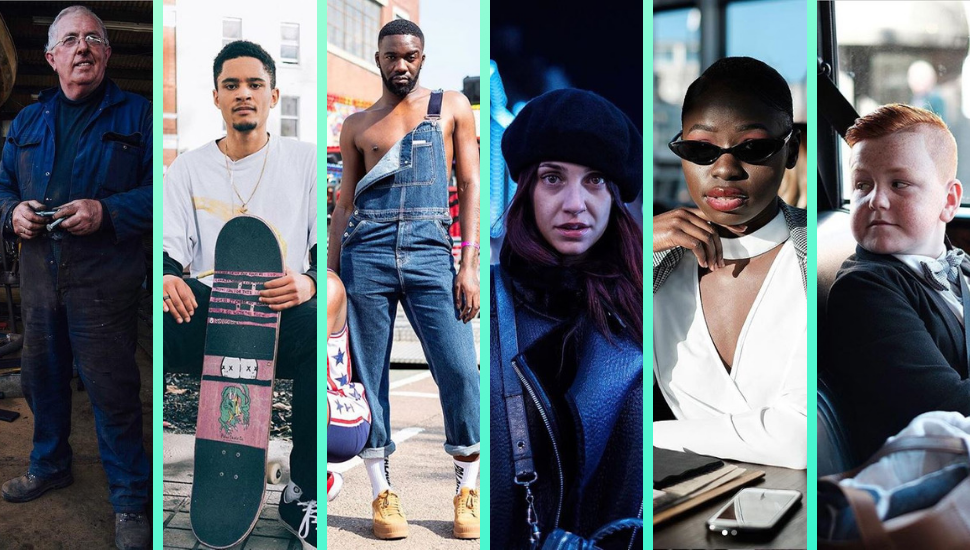
Earlier this year Tim Bartlett shot the Bishop of Hereford. Not like that.
When it came time for the new Bishop’s official portrait – a historic tradition more closely associated with oil paints and expressions of stern reverence – the Rt Revd Richard Frith became the first Bishop in a 500-year run to have a photo instead of painting.
Hereford College of Arts degree student Tim Bartlett got the job of taking the shot that will hang alongside past paintings for as long as the Bishop’s Palace stays standing. It’s a slight change of pace for a photographer whose Instagram feed is as likely to feature #hypebeast street portraits of dungaree’d duos hitting their angles at a Pride parade as it is a senior member of clergy.
But the principle holds. From mechanics to models Tim’s portraits capture a vivid sense of the individualism of his subjects – and if you’re the kind of Bishop that wants to break, however subtly, from tradition then it follows that you want someone who’s going to capture that element of your personality.
And after all, this is the Bishop who last year pushed forward the debate on same-sex marriage in the Church of England in a way we haven’t seen in years.
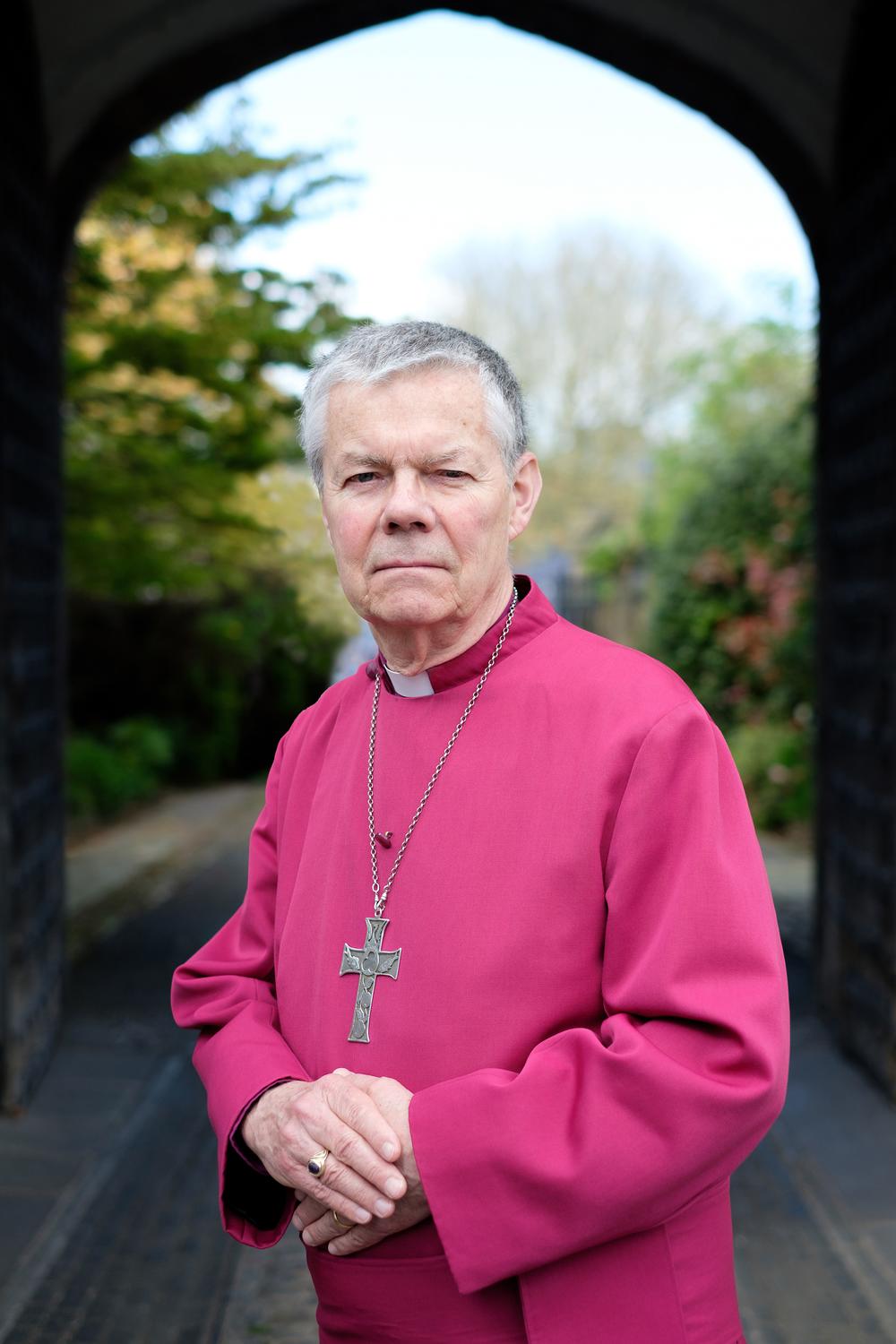
At a time when photographs last as long as they stay in an unrefreshed Instagram feed, we spoke to Tim about what it’s like taking an image that will last for all eternity – and got some pro tips on taking perfect cameraphone portraits on a night out.
Between you and me, how many wardrobe changes did the Bishop insist on going through?
It was more straight forward than I thought actually - he was already set on wearing the iconic Bishop's cassock.
This was the first time the official portrait was a photo. Obviously they didn’t have DSLRs in the 1600s, but what do think the decision says about the status of photography in 2018? And did you feel an elevated sense of responsibility when you were pulling the trigger?
It was a big step moving away from the traditional paintings which have been used for centuries, but also an exciting one.
There was always a tremendous amount of responsibility throughout this project, it was difficult to create something that would still stand alongside previous paintings and not look out of place so It still needed to have painterly qualities. Additionally, I knew it had to be something special that would positively stand out and lead the way for other future photographic portraits.
"I saw him in the distance walking towards me down a street in Bristol and I knew I had to take his portrait…
"His body language and stance made me think he must have been in involved with modelling at some point in his life."
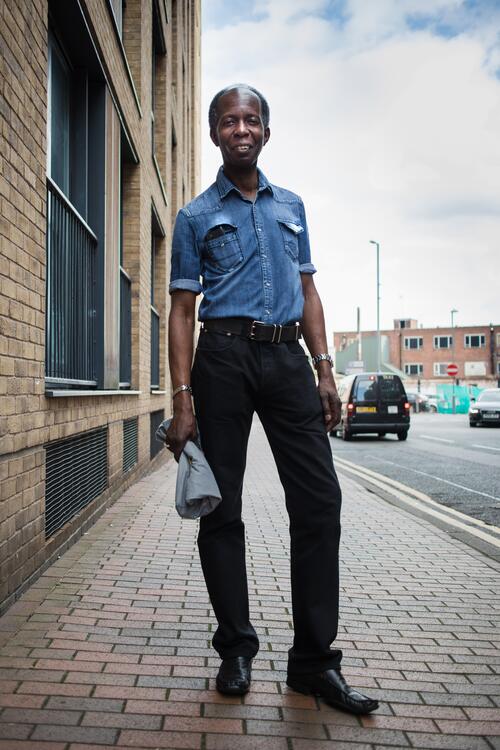
"This was taken during a trip to London last year. I saw the Christmas lights down this street and knew it would make an interesting background.
"I just needed to find the right person and then she walked past."
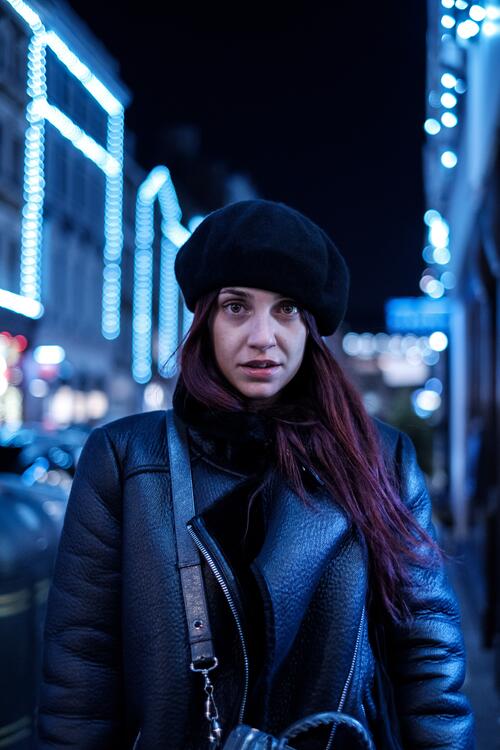
Did you consider having the Bishop remake the Kim Kardashian/champagne bottle shot?
I don’t think he would have liked that. Or understood it!
Fair enough. Whether it’s through paint, or through a lens, how do historical portrait artists balance realism with presenting a construction of their subject that filters their personality through the image?
It was definitely one of the most difficult portraits I have had to create thus far in my career. It was the small details that made it work.
At first, we tried an interior photo shoot - which had too much of an informal feel about it - then outside in the gardens with a glimpse of the Bishops palace and Cathedral in the background. However this was too forced and took away the focus from the Bishop himself. It was then the thought struck that the archway I had walked through many times could create a natural frame around the Bishop and it gave a glimpse of the outside world, which suggested that he is a part of the real world and a man of the people. This also added an element of his personality, and he is fond of the archways and the design of the building that surrounds him.
Additionally, the facial expression and body language had to be just right.
It couldn’t be a cheesy grin or too much of a stern look - it had to have a certain contemplative atmosphere about it. The Bishop and his wife, Kay, were very inviting and friendly people which definitely helped. But the key was to get the Bishop to relax in front of the camera which would in turn bring out a sense of his personality.
"I came across this couple whilst at the harbour in Cardiff. As a photographer you find you frame things in your mind before even lifting the camera to your eye.
"It’s one of those quiet and thoughtful moments where you can imagine the man talking to his wife about the harbour, the sea or boats."
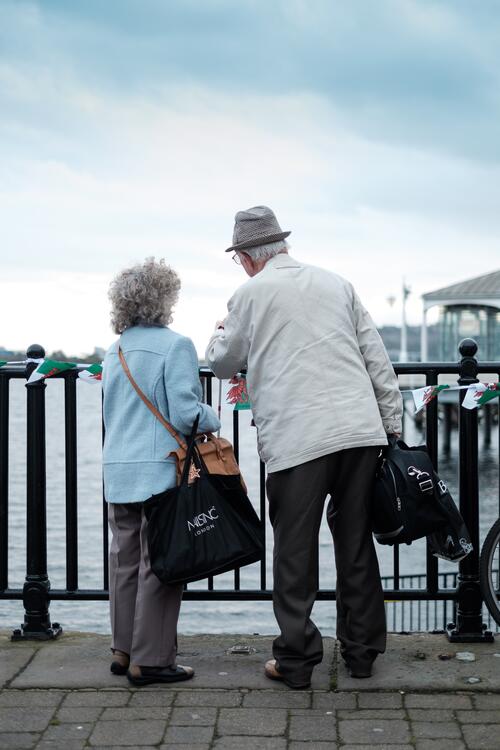
"This was also taken in Cardiff bay whilst taking a break in the coffee shop. I noticed this extremely well dressed and fashionable couple sitting a few tables away. The man she was sitting with wasn’t up for a photograph but was pleased I had asked.
"She had been involved with modelling in the past, so she was completely fine with it. I also send the photos to the models too."
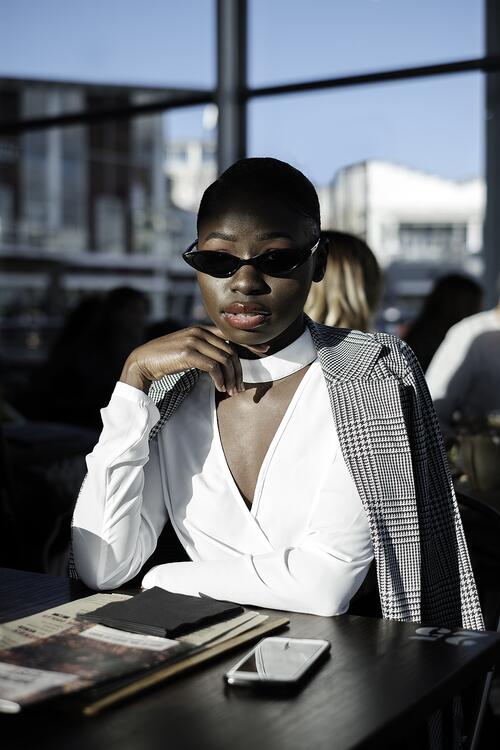
What do you look for in a subject? What makes you want to go shoot someone you see in the street?
It’s good to keep practicing and I enjoy taking a day out to roam around the streets with my camera. I'm always keeping a keen eye out for interesting people wherever it may be. It’s the unusual people I’m attracted to, someone who stands out from the crowd that may be wearing something different or has a certain expression on their face that tells a story.
Ideal set-up: who’s portrait would you shoot and where?
I don’t have a particular person in mind. I find it exciting finding unique people and creating intriguing portraiture wherever really.
At a time when we document so much of our life through photos – many of those of people – where is the place of portraiture as an artform?
The art of portraiture is what I am most fascinated with. There is so much you can change with the swap of a lens, framing and time you press the trigger. It’s amazing how much you tell about a person from a portrait.
Are selfies a signal of narcissism or just the inevitable product of someone creating the front-facing camera? (or neither)
It depends, there are so many reasons to why people do it. I think some people are easily influenced by others and the constant bombardment of selfies on social media of celebrities and unrealistic images of models. Not that I’m against this, I just I think it can be un-healthy to the psyche chasing after this.
"This is Stan, a local motorcycle mechanic in Hereford. I stumbled across his workshop on a walk around the river once and asked if he would be okay with me taking a few photos as him, and his old-school workshop was full of character."
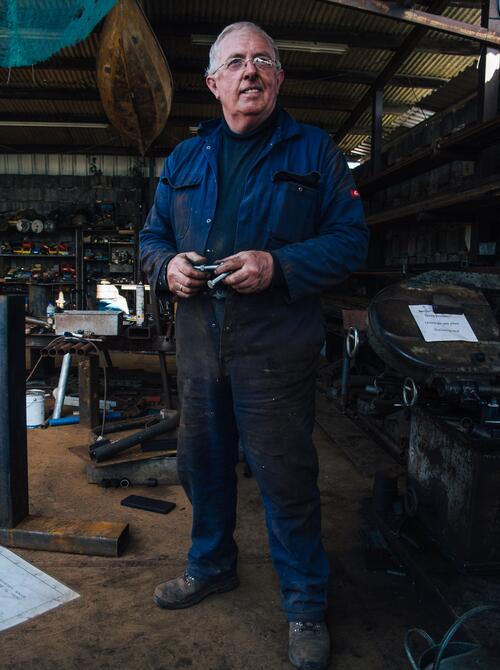
When people pull out their camera phone to take a pic of a friend, what’s the most common mistake they make? And are there any pro tips you can give on taking a portrait shots on a phone that will help people take their photos to another level?
1. Make sure nothing looks like it is sticking out of people’s heads. Trees, lights, window frames etc, this ruin a portrait.
2. Hold the phone straight - I’ve seen so many wonky portraits.
3. Don’t use flash. Use natural light instead if possible.
4. It depends on what you are going for, but if you’re in a nice environment, give the subject space to breath and show a bit of the surroundings to add context.
5. In some situations, depth of field is key - bring the model to the forefront of the photo, separate them from the background so they are not lost.
6. Take a few - you’ll find an expression that will be more appealing than others.
And for selfies?
I wouldn’t know! Not that I’m against them but I prefer taking photographs of others than myself.
To see more of Tim's work, or to work with him, check out his website here. To follow him on Instagram, check out his page here.